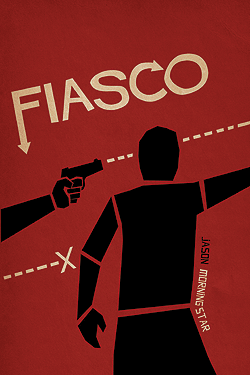In the 42 years since TSR published Original Dungeons & Dragons, tabletop role-playing games have seen a number of different design trends, as discussed here by John Kim. A popular mechanic nowadays that my rules set, Sorcery & Steel, has decided not to adopt is Player Narrative Fiat.
By "Player Narrative Fiat", I mean that game resolution is not determined by one or more of the following:
Positive examples of Player Narrative Fiat run the gamut from Fate Points (i.e., player narrative currency to alter the outcome of a randomizer) to full blown GM-less story games where a PC doesn't die unless the player chooses so, such as the well regarded Fiasco (2009):
So, am I saying that Player Narrative Fiat is bad?
Not at all! However, personally, I think it flies in the face of the Old School "feel".
One might then ask, "What about close cousins, such as Force Points in d6 Star Wars?"
The distinction I draw between Force Points and Fate Points (which are mechanically identical), is that Force Points flow from the character (yes, that's a Star Wars joke) rather than the player, thus falling under the fourth bullet point above. Similarly, I think that Willpower in the Storyteller System or a Wish spell in Old School D&D are fine.
Thus, as you might expect, my rules set, Sorcery & Steel, utilizes no Player Narrative Fiat. In other words, while my rules set does contain some modern flourishes, the Dice Gods are still to be respected.
By "Player Narrative Fiat", I mean that game resolution is not determined by one or more of the following:
- The rules,
- GM rulings,
- A randomizer (e.g., dice), and/or
- Character skills/abilities.
Positive examples of Player Narrative Fiat run the gamut from Fate Points (i.e., player narrative currency to alter the outcome of a randomizer) to full blown GM-less story games where a PC doesn't die unless the player chooses so, such as the well regarded Fiasco (2009):
So, am I saying that Player Narrative Fiat is bad?
Not at all! However, personally, I think it flies in the face of the Old School "feel".
One might then ask, "What about close cousins, such as Force Points in d6 Star Wars?"
The distinction I draw between Force Points and Fate Points (which are mechanically identical), is that Force Points flow from the character (yes, that's a Star Wars joke) rather than the player, thus falling under the fourth bullet point above. Similarly, I think that Willpower in the Storyteller System or a Wish spell in Old School D&D are fine.
Thus, as you might expect, my rules set, Sorcery & Steel, utilizes no Player Narrative Fiat. In other words, while my rules set does contain some modern flourishes, the Dice Gods are still to be respected.


No comments:
Post a Comment